
Gutters and downspouts don’t really seem all that critical to an overall project, do they? They consume very little visual bandwidth, they typically just follow the lines of the house, and as long as they’re doing their job, why over-think them? That’s how it would seem, anyway. But take one of those chinsy K-style gutters and stick it on a clean, modern design and it’s no longer modern. You know the ones, they look like this:
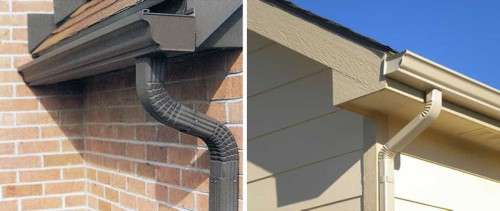
Pair the most used and abused gutter profile with those ribbed rectangular downspouts and you might as well be slapping together beige spec homes in America’s soon to be foreclosed suburbs. They can really cheapen an otherwise well designed home. As negligible as gutters and downspouts seem to the overall look of a project, they matter. They matter so much in fact that we’ve got enough advice, tips, and technical info for a blog post.
Here goes—our guide to Modern Gutters & Downspouts:
GUTTER SPEC:
Custom fabricated 5” x 5” 22 gauge box gutter profile with a hem-line at the top. Gutter clips are used at 2’-0” oc. The gutter is fabricated in 10’ sections, laced together, riveted, and sealed. Unfortunately, continuous modern box gutters are still not available even though there’s a huge market for them (hint to industry).
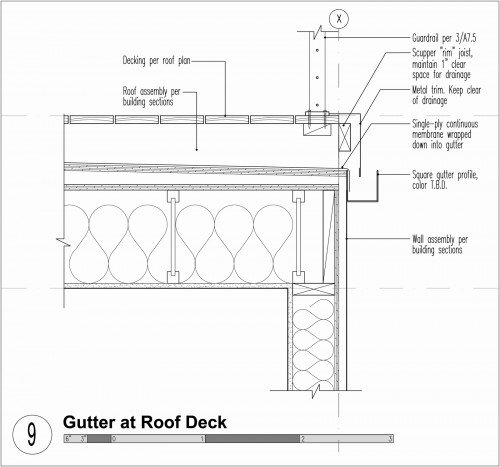
For an enlarged PDF of the Gutter at Roof Deck (above) click here, or for the conventional sloped roof (at the top of post) click here.
GUTTER DESIGN ADVICE:
1. Match the color to the roof (typically a standing seam metal roof on our projects).
2. For a deliberate look, align the bottom of the gutter with the flashing joint of the metal fascia.
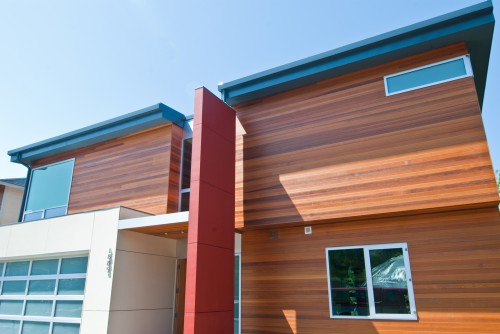
3. A quality installation can make up for the structure’s inequities. Hire an experienced tradesperson who knows when to follow the lines of the building, and when to let the gutter slope.
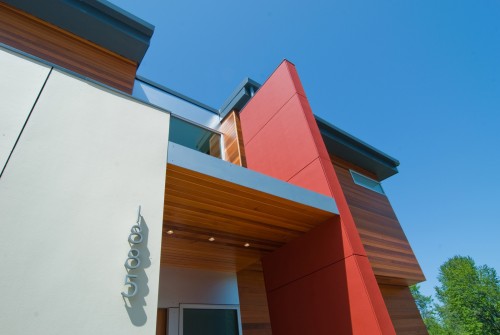
DOWNSPOUT SPEC:
3” Diameter round 22 gauge downspouts to match gutter color, fabricated in 10’ lengths.
DOWNSPOUT DESIGN ADVICE:
1. Locate downspouts on less prominent faces of the structure.
2. Situate downspouts away from lines of sight and out of view from windows. At the application below, the downspout was tucked into the corner adjacent to (but not in view from) the slot window. It disappears from views and blends in with the shadows.
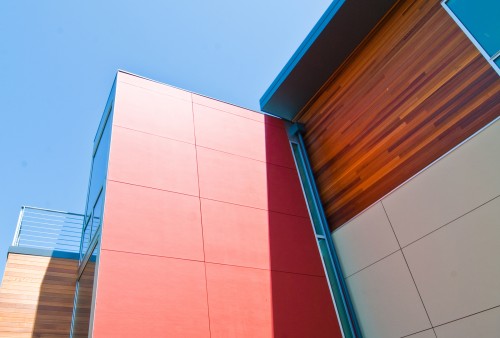
3. Camouflage them with screens or exterior walls. At the application below, the downspout needs to be adjacent to the entry—a prominent and undesirable location. To conceal the downspout, it was tucked into an exterior fin wall (you can see the connection between the top of the wall and the bottom of the gutter).
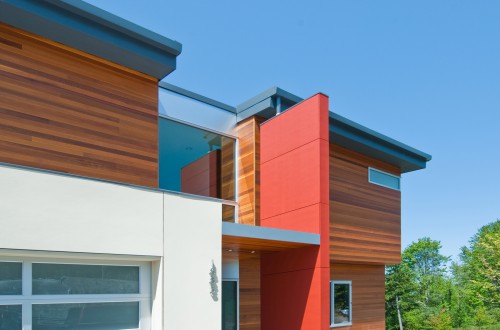
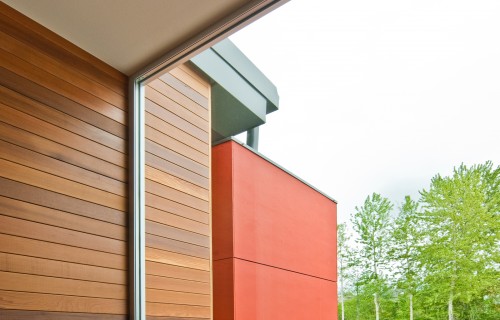
Let us know if you’ve got some favorite specs or advice on gutters and downspouts.
Cheers from team BUILD





